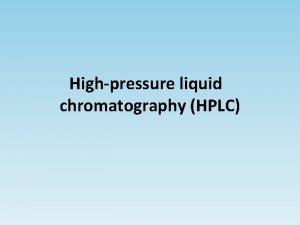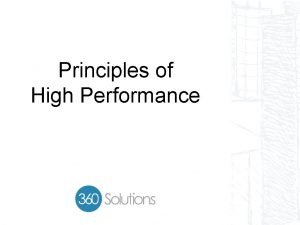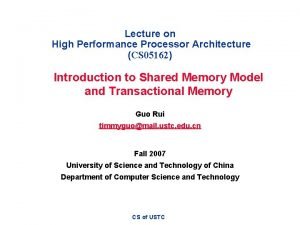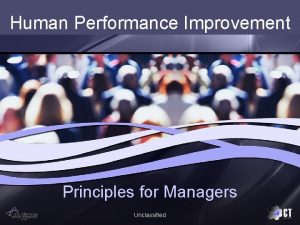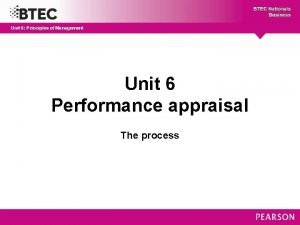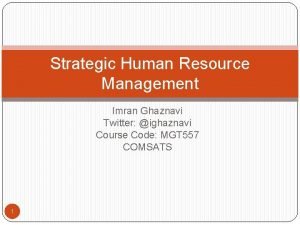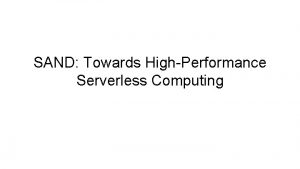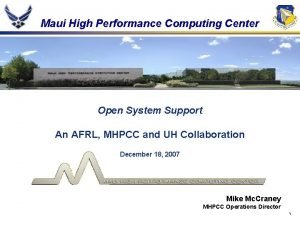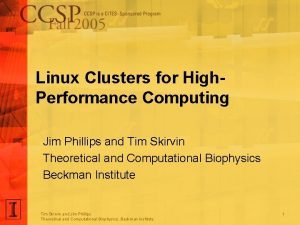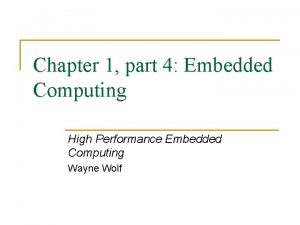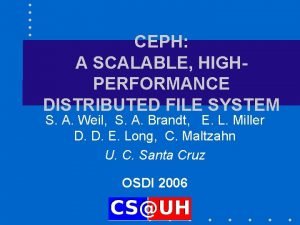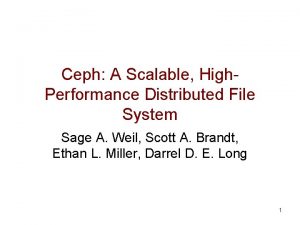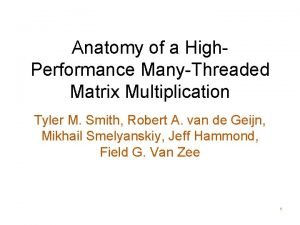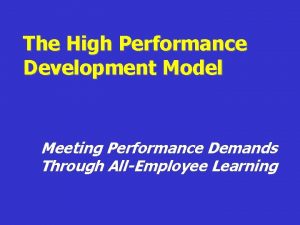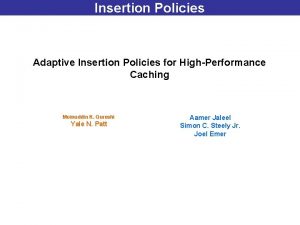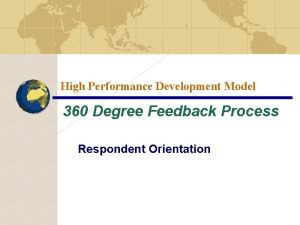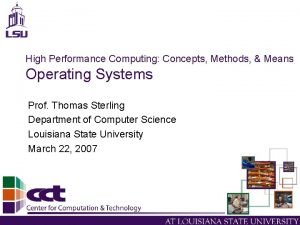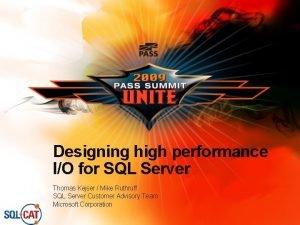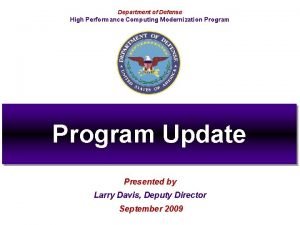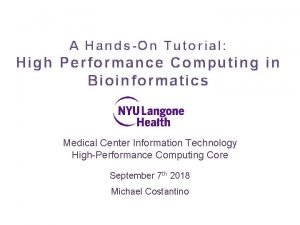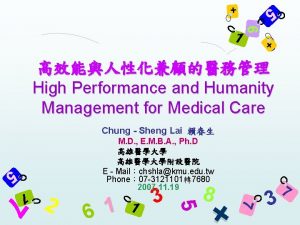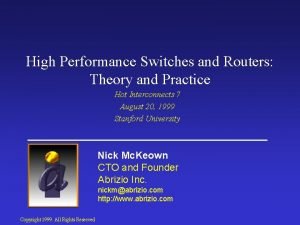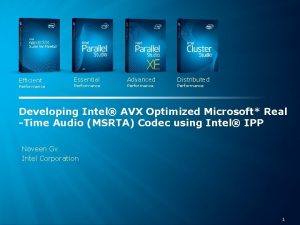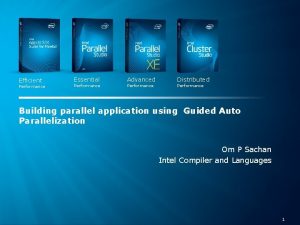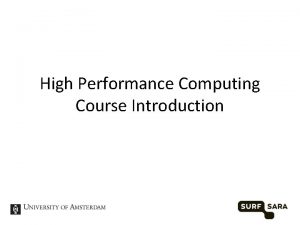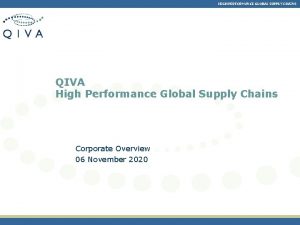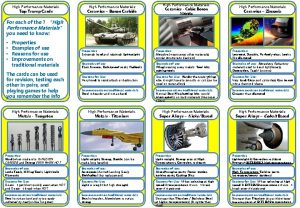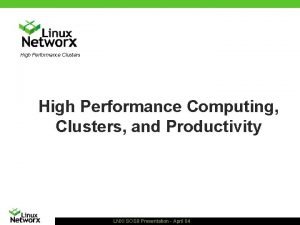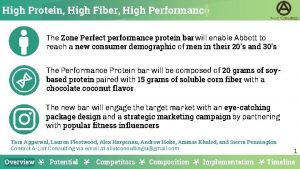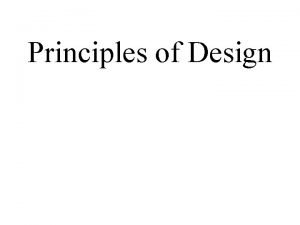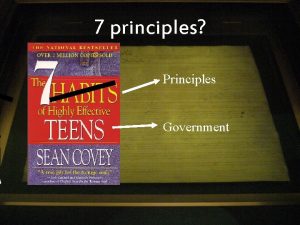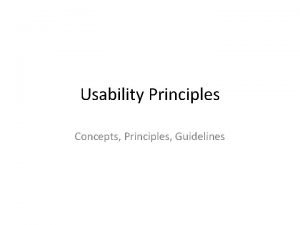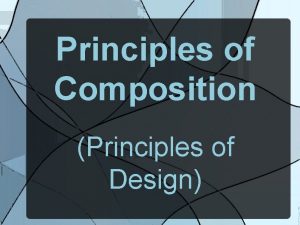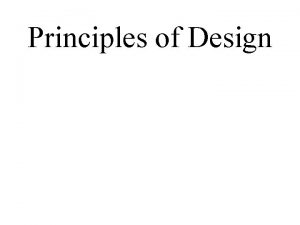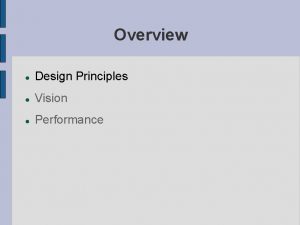Principles of High Performance Principles of High Performance































- Slides: 31

Principles of High Performance


Principles of High Performance Program Overview • Know the difference between Traditional and High Performance. • Understand the basic building blocks of High Performance. • Know how to build trust in your organization. • Identify progress and first steps toward High Performance.

What You Will Learn • The concept of paradigms • Practices and principles of the Traditional and High Performance paradigms • The difference between a Traditional and a High Performance work environment • Why the High Performance model works • The challenges of moving to High Performance

Traditional Paradigm • Specialization • Standardization • Division of Labor • Centralization • Uniformity • Control

High Performance Paradigm • Shared purpose • Empowerment • Holistic view • Structure fits organization purpose • Developmental management role • Customer focus • Continuous learning


Program Overview • Know the difference between Traditional and High Performance. • Understand the basic building blocks of High Performance. • Know how to build trust in your organization. • Identify progress and first steps toward High Performance.

What You Will Learn • The origin of High Performance work systems • The characteristics of Traditional and High Performance organizations • The leadership role shift required for High Performance • Characteristics of High Performance teams • The importance of stability before moving to High Performance

High Performance Organization Definition: An organization that achieves outstanding results by making each person a contributing partner in the business • People understand the business and are committed to getting results. • People are organized into selfmanaging business units and teams. • Teams take responsibility for decisions, problems, and continuous improvement.


A High Performance Team Definition: A self-managing, multi-functional group of people organized around a “whole process, ” and empowered with full responsibility for their own success

Traditional to High Performance Leadership TRADITIONAL MANAGEMENT From: Directing and doing • Solving it, “answer man” • Doing it yourself: “If you want something done right…” • Over-directing and micromanaging • Mandating goals • Experting it: “You can’t do it without me” • Being the quality judge and jury • Playing the “God” role • Protecting turf • Overdependence on detailed policies EMPOWERING LEADERSHIP To: Developing and leading • Facilitating problem solving • Empowering others • Helping others learn from mistakes • Providing leadership for goalsetting process • Developing technical confidence capability: “You can do it” • Being a quality coach • Support as a helpful resource • Linking team to broader org. systems; bridging barriers • Being tough and clear about direction, principles, and boundaries



Principles of High Performance Program Overview • Know the difference between Traditional and High Performance. • Understand the basic building blocks of High Performance. • Know how to build trust in your organization. • Identify progress and first steps toward High Performance.

What You Will Learn • The consequences of win/lose and win/win strategies • How to achieve win/win in your relationships • How to improve trust • To identify the biggest organizational trust issues • To set personal goals for improving trust

How to Achieve a Win/Win (a) • Listen empathetically. • Find out what is important to others. • Agree on clear, common goals. • Avoid absolute statements. • Involve others who are affected.

How to Achieve a Win/Win (b) • Achieve consensus or make collaborative decisions. • Test tradeoffs and compromises for agreement. • Look for similarities and areas of commonality. • Avoid potential win-lose situations or strategies. • Think “our problem, ” not “my problem” or “your problem. ”

TRUST DEFINITION: Confidence in your relationship with others

The Risk Cycle

What Builds Trust • Acting with trust and confidence • Taking risks • Responding with respect & confidence • The sense that others are honest with you • Forgiving • The sense others share your vulnerabilities • Responding with appreciation


Principles of High Performance Program Overview • Know the difference between Traditional and High Performance. • Understand the basic building blocks of High Performance. • Know how to build trust in your organization. • Identify progress and first steps toward High Performance.

What You Will Learn • The High Performance Development Model • The Transformation Model • The Transition Planning Model • Forces driving and restraining change • Top priorities for moving to High Performance


High Performance Programs High Performance • Principles of High Performance Organization Assessment • Assessing Your Organization for High Performance Leadership and Personal Development • High Performance Leadership: From Control to Empowerment • Emotional Intelligence • The Trust Factor: Creating Win/Win Relationships

High Performance Programs (Continued) Strategy • Developing a High Performance Strategy: Competing to Win Teams: • Developing High Performance Teams: What They Are and How to Make Them Work • Skills for High Performance Teamwork



Customer Feedback Accounting Dept. resistance Senior Management commitment Longevity and age of some employees Consolidation into one facility Lack of equipment for each business unit Execution of design recommendations Fast time frame to start-up
 Uses of hplc
Uses of hplc High performance organization principles
High performance organization principles Principles of high-performance processor design
Principles of high-performance processor design Behaviorally anchored rating scale
Behaviorally anchored rating scale Performance appraisal process
Performance appraisal process All performance attributes designated as joint performance
All performance attributes designated as joint performance Human performance improvement principles
Human performance improvement principles Human performance principles
Human performance principles Principles of performance appraisal
Principles of performance appraisal Decruitment options
Decruitment options Sand: towards high-performance serverless computing
Sand: towards high-performance serverless computing Maui high performance computing center
Maui high performance computing center High performance linux clusters
High performance linux clusters High performance work practices examples
High performance work practices examples Laptops for high performance computing
Laptops for high performance computing High performance nutrition
High performance nutrition Mttf
Mttf Ceph distributed file system
Ceph distributed file system Ceph: a scalable, high-performance distributed file system
Ceph: a scalable, high-performance distributed file system Anatomy of high-performance matrix multiplication
Anatomy of high-performance matrix multiplication High performance development model
High performance development model Adaptive insertion policies for high performance caching
Adaptive insertion policies for high performance caching High performance development model
High performance development model High performance operating system
High performance operating system High performance sql server
High performance sql server High performance computing modernization program
High performance computing modernization program High performance computing nyu
High performance computing nyu High performance cycle theory
High performance cycle theory High performance indicator test
High performance indicator test High performance data analytics hpda
High performance data analytics hpda High performance web sites
High performance web sites High performance switches
High performance switches
